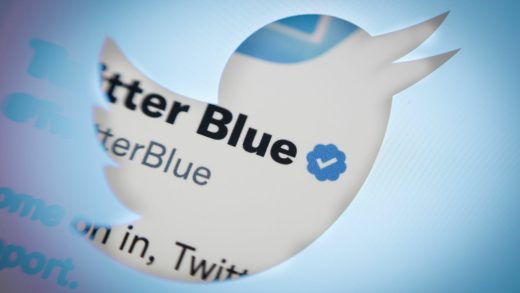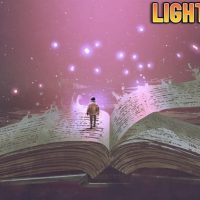During my first year in New York, I learned that an old theater, not far from my apartment, showed It’s a Wonderful Life at Christmastime. I was new to the city, still acclimating to its competing layers of freedom and constriction. I craved the familiar. I missed my mom. I had grown up watching George Bailey, and some of my friends had too. We purchased tickets in advance and made a night out of it.
For me the movie was steeped in ritual. In one of my earliest memories, I’m laying in a heap of pillows at my aunt’s house, sipping hot chocolate, surrounded by a pack of cousins. It’s snowing out, an early snow, the same fat flakes that blanket Bedford Falls at the start of the film. I’m younger than young George Bailey is, but I remember wondering how many of the actors are still alive.
We watched the movie every year, once shortly after Thanksgiving, then again on Christmas Eve during the NBC telecast. We quoted it readily: “I wish I had a million dollars. Hot dog!” “Every time a bell rings an angel gets its wings.” “George Bailey lassos stork.” It became a family heirloom of sorts, a touchstone passed down by our mothers, who themselves had inherited their devotion from our grandmother.
Watching the film on a big screen in Greenwich Village, fully immersed in its sepia glow, felt at first like a revelation. This was the way the movie was meant to be experienced—with popcorn, Surround Sound, an ice-crackled Coke. With a community. I watched George Bailey save his brother in a frozen pond and rescue the town pharmacist from a lethal mishap. I watched him plan a life of travel and adventure only to find his dreams deferred. I watched him discover true love where he hadn’t expected it, with Mary Hatch, the girl next door. Then I watched the Clarence come to him at his lowest and offer him a new perspective on life. At the end of the movie, when the citizens of Bedford Falls rally around George Bailey, when the music swells with “Auld Lange Syne” I found myself tearing up. After some time away, I was meeting the movie again with new eyes. Its dark undercurrents rooted deeper. Its ending packed more of a punch.
My friends and I went again the next year, and the year after that. Each time we left the theater bleary eyed and hopeful. We’d wander to a bar called Amity Hall and ordered hot toddies. After the third year it became an unchallenged tradition. We vowed to never miss it.
In 2013 something happened. I had been grappling with a pressing loneliness, and now, in my late 20s, it had begun to escalate. As my friends paired off, I found myself more alone. That summer I started leaving the city on the weekends. Out in Montauk, a beach town three hours from Manhattan, I unexpectedly fell in love for the first time with a guy. As my feelings blossomed, so too did an emerging sense of self. I felt a lot of things that summer, but most of all I felt more human.
A major paradigm of my life had shifted, but I was determined to prove that everything else was the same. In the ensuing years our It’s a Wonderful Life tradition came to represent a continuity for me, an abiding bridge between my past and present identities.
Last Sunday was our ninth annual viewing. Once again I ordered a popcorn and a soda. Once again I found a seat in the sold out crowd. I experienced the movie as I always did—through an aching haze of nostalgia. The movie felt like Christmas, of course, but it also felt like my family. It felt like my New York life, and my tightly woven friends who embraced it.
Near the end of the movie, when George finds himself in a hypothetical world in which he was never been born, he and Clarence enter Martini’s bar, which is now called Nick’s. Its sign has changed and so has its energy. The bar is louder, rowdier, more crowded. George orders a double bourbon and Clarence, an angel who has been dead for over two centuries, tries Nick’s patience as he ponders what to drink. He touches Nick’s hand affectionately and orders a “Flaming Rum Punch.” Nick reacts badly.
Hey look, mister,” Nick says. “We serve hard drinks in here for men who want to get drunk fast, and we don’t need any characters around to give the joint ‘atmosphere.’ Is that clear, or do I have to slip you my left for a convincer?”
“What’s the matter with him?” George asks Clarence. “I never saw Nick act like that before.”
“You’ll see a lot of strange things from now on,” Clarence replies.
George wraps his arm around Clarence. He asks him if he has a place to sleep and if he has any money. Nick misconstrues George’s platonic concern for a sexual overture and extracts them from the bar. “Out you two pixies go… through the door, or out the window!”
In the years since I came out, I’ve felt this scene whittle into a sharp needle. Even though it takes place in an alternate world, in Pottersville, a scary, off-kilter version of Bedford Falls, it echoes with the beats of a less accepting past. Nick’s derision for Clarence and his unchecked flamboyance is palpable. His homophobia is searing. I no longer knew what to make of this scene. Was it played for laughs? Was it meant to highlight the ways in which George Bailey’s presence had instilled a more accepting ethos? Was the movie problematic? Homophobic? What about it’s glaring whiteness? Did my privilege shroud me from countless other ways the movie might bristle? As I sat in the theater I couldn’t help but envision what my life would look like in that small upstate town. It made me sad.
I watched the movie to the end. As George returned home, I felt a familiar tug at my heart. The townsfolk flooded the Old Granville house, George’s brother arrived. The ending gave me hope, affirmed goodness. I cried at “Auld Lang Syne.”
I thought back to the Nick’s bar scene and remembered something pop culture critic Kelsey Miller recently said. You can love something and still critique it. You can see its flaws without dismissing it entirely. Maybe it didn’t have to be all or nothing. Maybe the scene was a reminder of how far we’d come.
I walked up West 4th Street, past dive bars, a Tattoo parlor, a pastry shop. Of course my contradictory feelings were okay. They echoed the movie’s most salient theme: that imperfection and goodness were never mutually exclusive.
I reached my apartment feeling buoyant, reinvigorated. I was glad I’d met the movie once again with a more expansive view. I felt thankful for my friends and our decade-spanning tradition. I felt thankful to live in a city where I could do something like this. I thought back to those early years with my cousins. The hot cocoa. The blankets. The snow. The sharp edges of Nick’s had dulled away. I’d be back again next year.
Image: Flickr/Insomnia Cured Here
The post Maybe It Doesn’t Have to Be All or Nothing: Appreciating ‘It’s a Wonderful Life’ appeared first on The Millions.
Source : Maybe It Doesn’t Have to Be All or Nothing: Appreciating ‘It’s a Wonderful Life’












